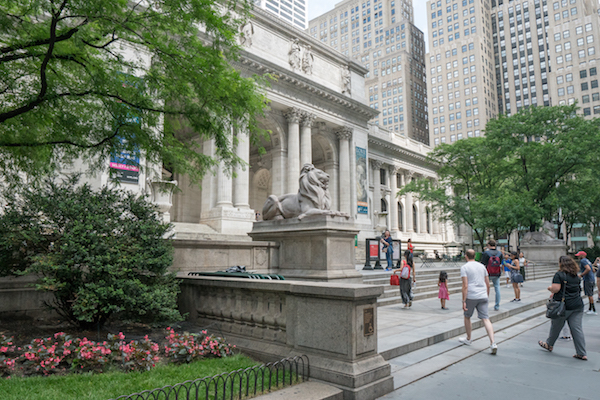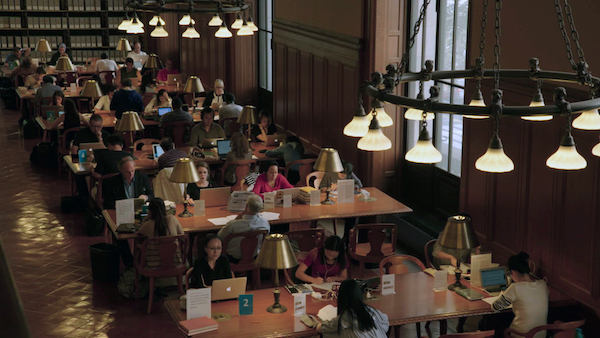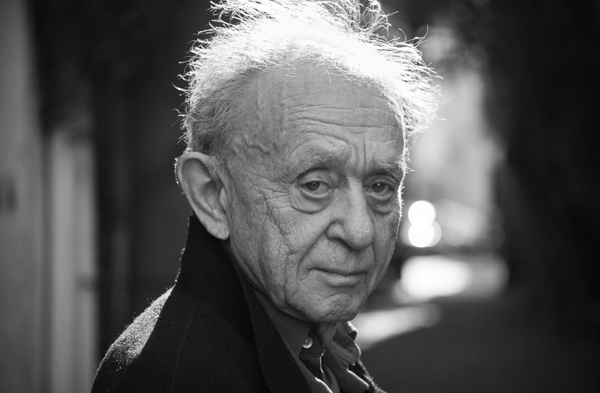
BY SEAN EGAN | “I don’t even use the term documentary,” asserted legendary filmmaker Frederick Wiseman, 87. “In my youth when people used the word documentary it always had the connotation of something that would be boring and would be good for you. I don’t think either of those has to be the case. It was almost like Ex-Lax. … That was the connotation of documentary a long time ago. I think there’s still a slight flavor, so to speak, of that. They’re just movies. What’s wrong with that word? It’s a good enough word for me.”
Terminology aside, it’s hard to overstate Wiseman’s contribution to the documentary form throughout his career, which has yielded more than 40 films in five decades, from his groundbreaking 1967 debut, “Titicut Follies,” to “In Jackson Heights,” his 2015 neighborhood portrait. The director’s style is low-key and inimitable — fly-on-the-wall footage is presented sans narration and subtitles, as careful editing immerses viewers into the milieu of his subjects (often over expansive run times). Wiseman’s importance certainly hasn’t been lost on the film community: Film Forum is gearing up to release his latest work (he’s the theater’s most-premiered American director), and are currently in the midst of a multipart career retrospective. Over its expansive selection of films, the lookback, titled “The Complete Wiseman,” captures Wiseman in his element, chronicling a number of institutions with unrivaled depth and grace (1989’s “Central Park,” 1995’s “Ballet”).
“I think, generally speaking, I’m a curious person. I am ‘Curious Fred’ instead of ‘Curious George,’ if you know that children’s book,” Wiseman remarked. “In a sense, the institution is only an excuse, a pretext, to have a look at what’s going on in America. What I’m trying to do overall is to give an impressionistic account of contemporary life and each institution provides a framework for that,” he noted.
Wiseman’s latest, “EX LIBRIS — The New York Public Library,” continues to mine this vein by taking an in-depth look at the New York Public Library (NYPL). Its system, comprised of over 92 branches in three boroughs, provides Wiseman with an excellent opportunity to gauge America’s pulse through the lens of a societal cornerstone often taken for granted.
“It just occurred to me one day that I had never done a library, and a library might make an interesting addition to this so-called institutional series that I’ve been doing,” Wiseman explained. After getting permission from NYPL President Anthony Marx in 2015, Wiseman visited a number of branches, and started filming soon thereafter. Armed with NYPL activity bulletins, Wiseman bounced around the system for 12 weeks, capturing everything from lectures to NYPL board meetings to simple day-to-day activities.
Then, Wiseman began his extensive editing process, poring over hundreds of hours of footage in order to determine the shape and themes of the movie (“I can’t work on structure in the abstract,” he noted). “I had the view, naïve and uninformed, before I started [that] the library was a place you take out books. That’s only a very small part of what goes on in the New York Public Library,” said Wiseman. “Over the last eight or 10 years, the branches particularly have become important cultural and academic centers in the communities. … I was very moved by the depth and scope of the work of the library.”
The film bears out Wiseman’s realization, as “EX LIBRIS” paints an NYPL that’s a far cry from the hushed tones and austerity often associated with libraries. Locals assemble to discuss community politics and take classes; children enjoy after-school activities; and students take advantage of the unique resources exclusive to the NYPL. Philosophy, history, and art are passionately and thoughtfully discussed, in the form of events featuring high-profile figures such as Richard Dawkins, Elvis Costello, and Ta-Nehisi Coates, as well as classes from lesser-known lecturers delivering animated talks on Jewish identity in America, socialism, and the slave trade. Meanwhile, Marx and the board are shown working to improve the NYPL, debating how to push it further into the 21st century.
“I think the library represents the best aspects of democracy. Particularly in this time when there’s an attempt to undermine the very idea of democracy by the Trump Administration,” postulated Wiseman, who cites the accessibility of the library as fostering opportunities for all members of the community. “What you see is democracy in action. You see immigrant groups being helped, you see poor people being helped, improving the possibilities for getting better work, furthering their education, improving their language skills, or their training skills,” he elaborated. “Well, that’s completely opposite to the attitude and the point of view that’s coming out of Washington. The film is very political in that sense; the contrast between the interest in people that the library represents, and the racism and elitism that comes out of the Trump Administration.”

Nonetheless, Wiseman does not consider himself a political filmmaker — that is, his movies, with their decided lack of editorializing, do not trade in the kind of partisan politics or didactic message-distribution many more recent, financially successful documentaries aim for (ones “mainly of the Michael Moore variety,” he quipped).
“There’s a famous American philosopher by the name of Samuel Goldwyn who said, ‘If you have a message, send a telegram.’ It would be presumptuous of me to make a statement of what I hope people will get out of [my films]. I hope they enjoy the movies and it provokes and stimulates them to think about the material, the subject matter of the movie, or the group of movies if they see more than one,” Wiseman explained. “We all live such segmented lives. One of the things that movies like [‘EX LIBRIS’] can do is bring the experience of being at the place to people who haven’t had my experience. It’s not many people get a chance to spend 12 weeks wandering around the main branch and the various local branches of the New York Public Library. Or similarly, hang out at ballet rehearsals for three months. Or if you haven’t been through Army basic training, see what Army basic training is like. Or if you haven’t been riding around in police cars, give you a sense of what that’s about.
“When a film like this works it can bring the experience to the viewer,” he asserted. “I don’t have any general wish other than, naturally, because I make the movies, I’d like them to be seen. I hope people will think about what the movie is about.” It might be a simple request, but Frederick Wiseman has proven time and again over his career that his movies deserve to be not only seen and thought about, but treasured and revisited long after the projection bulb dims.
“EX LIBRIS — The New York Public Library.” Director, Sound, Editor, Producer: Frederick Wiseman. 197 minutes. Daily screenings, Sept. 13–26, at 12:15pm, 4pm & 7:45pm. Tickets: $15, $9 for members. At Film Forum (209 W. Houston St. btw. Varick St. & Sixth Ave.). “The Complete Wiseman: Part II (1986-1996)” runs Sept. 6-14. Call 212-727-8110 or visit filmforum.org. Wiseman appears for Q&A following the 7:45pm screenings on Sept. 13 & 14. He will be in discussion with Errol Morris at the NYPL on Sept. 14, 7–9pm. For tickets ($25) and info, visit nypl.org/LIVE.


















